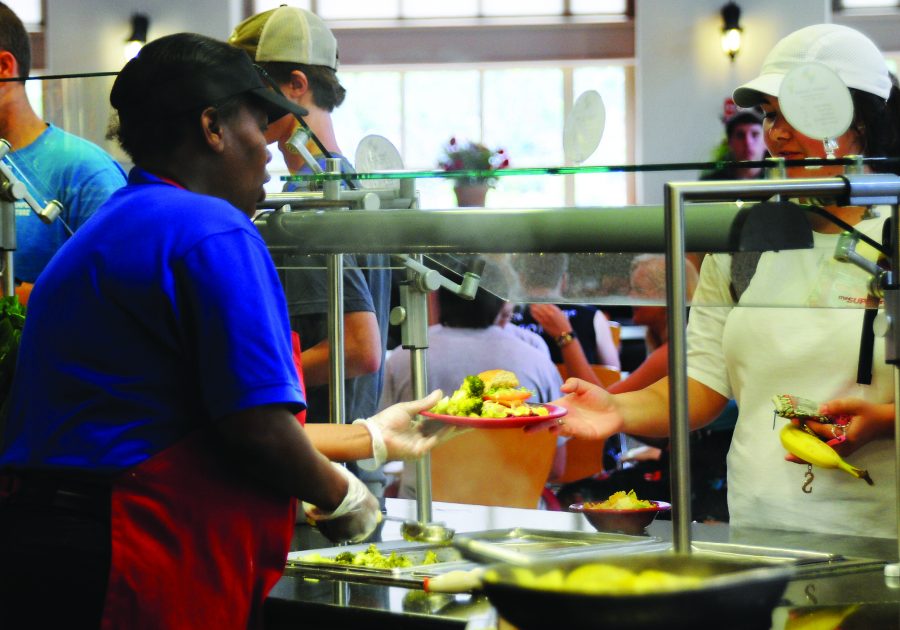Alabama is packing on the pounds, according to an analysis released Aug. 13 that weighed the state in as the fourth-most obese state in the country.
The study by the Centers for Disease Control and Prevention found that Alabama had a 32 percent prevalence of obesity in 2011, just behind Mississippi, with the highest rate at 34.9 percent, Louisiana (33.4 percent) and West Virginia (32.4 percent). The lowest rate was Colorado, at 20.7 percent.
This year’s data drops Alabama down from the third place spot in the 2010 study rankings. However, the 2011 telephone survey, which asked for the height and weight of adults, was the first year in which cell phone users were included.
The study also named Alabama as one of 12 states with a prevalence of over 30 percent. In 2000, no state had a prevalence rate that high.
“The health of the state is definitely a work in progress,” said Sheena Gregg, assistant director of Health Education and Prevention at the University of Alabama and a dietitian for the UA Student Health Center. “Nationally, weight has been in the limelight, and we need to focus on trying to make a healthy lifestyle more accessible to citizens.”
Gregg, who also serves on the Alabama Obesity Task Force, acknowledges that some residents of the state don’t have access to healthy eating options, and many opt to substitute health for affordability at fast food restaurants.
“Much of the underlying cause of obesity is a combination of having a sedentary lifestyle – not being as active as we were and recognizing that kids aren’t as prone to go play outside as they once were – and not necessarily having the option of healthy food choices,” she said. “The nice thing about processed foods is that they are more affordable, but they don’t have the nutrition value that fruits and vegetables have.”
Gregg specifically believes that staying healthy is often hard for young adults and students due to chaotic, stressful schedules. She notices that UA strives to provide a healthy environment for students, but nevertheless, fast food options like Chick-fil-A and Starbucks tend to attract large lines.
“The campus is actually very healthy, and I say that attesting to the food options on campus – balancing savory home-cooked meals, which are normally high in calories, with healthy salad bars” Gregg said. “It’s a matter of keeping healthy decisions a priority with a busy lifestyle as a student. If we make a point to mark on our schedules specific times to eat or exercise, it will keep us doing it.”
Kathryn Mills, a sophomore majoring in nutrition, agrees that the University does a good job at providing healthy eating, but says students must be responsible in order to make good decisions.
“They are trying to make campus more ‘health-friendly’ by offering fresh, more nutritious options and by reaching out to people with special dietary needs, such as vegan or gluten-free,” Mills said. “But you can’t completely judge the health of the campus by the University. The options are there, but it just depends on the person’s choices.”
Gregg suggests keeping caloric intake at a starting base of around 2,000 per day.
However, Sarah Chaffee, a Project Health executive board member and Health Hut intern, believes a lot obesity problems stem from not keeping up an active lifestyle.
“I think that many people on campus are interested in being healthy, but, for various reasons, are not making active changes towards a healthier lifestyle,” she said. “Convenience is a contributing factor to that, as well as stress, finances and relationships. Making yourself aware of these factors and how to manage them would also create an overall healthier lifestyle.”
Chaffee recommends biking to class, walking up stairs and taking advantage of campus recreation facilities to stay fit. Gregg adds that exercise can be easier with a friend.
“Try to get together with friends to lose weight,” Gregg said. “In the same way that eating is a very social experience, losing weight can be the same way. When you have a friend to keep you accountable, exercising can be easy.”
Social media can be beneficial to staying healthy, she said. The smartphone app, My Fitness Pal, can be used to keep a track of daily caloric intake and exercise habits. Additionally, the student organization Strive Crimson Tide revolves around sharing healthy decisions on campus through their Twitter account @OneADay4UA.









